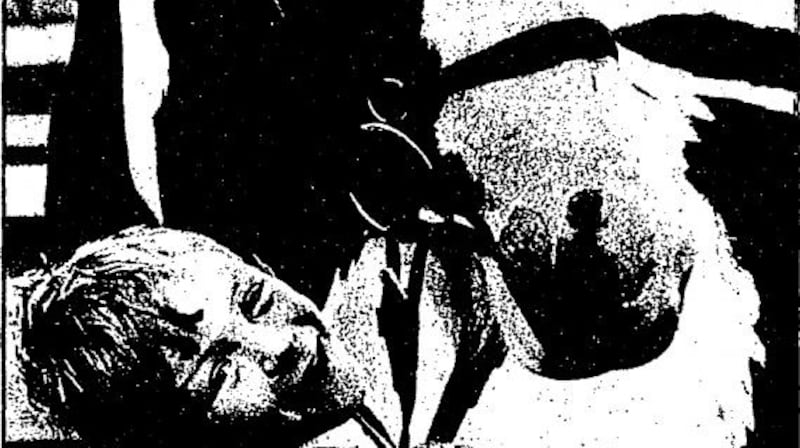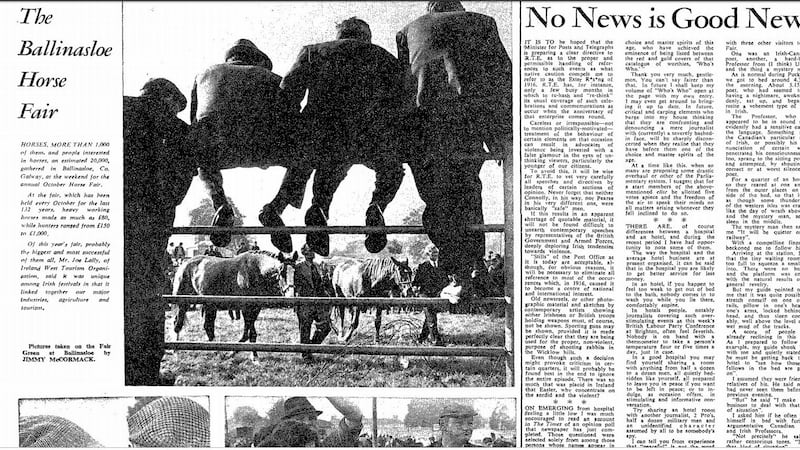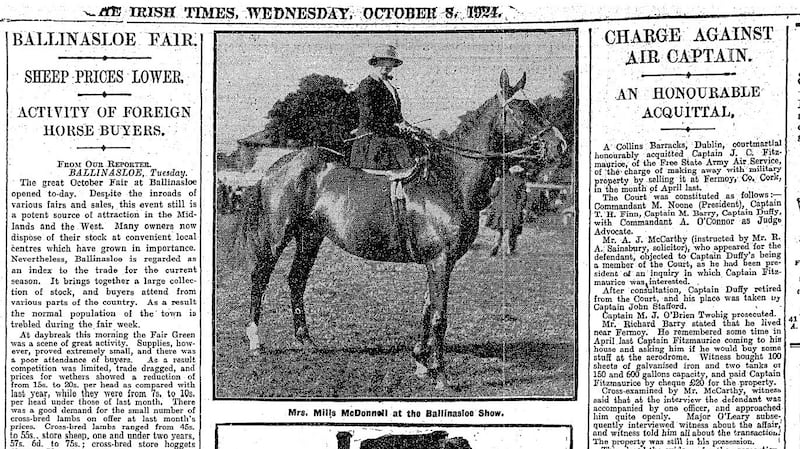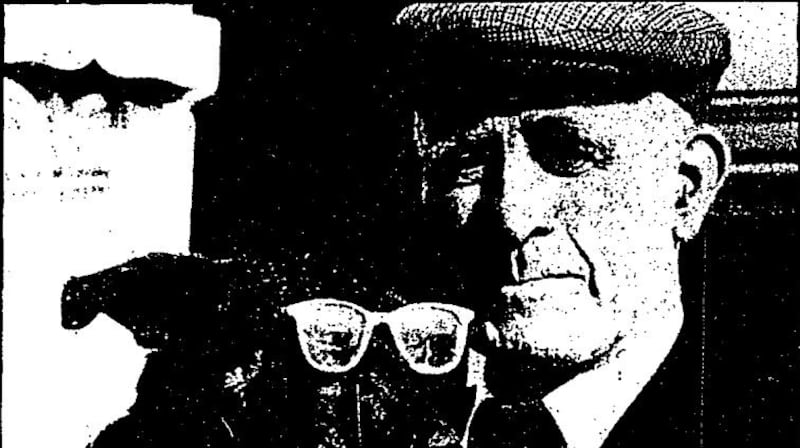For many in Ireland, autumn means one thing: the Ballinasloe Horse Fair, which remains a huge event in the Irish calendar, though rarely attended by those with no investment – agricultural, cultural, equine or geographical – in it. The Ballinasloe Horse Fair is thought to be the oldest in Europe, always beginning on the Saturday before the first Tuesday in October.
On Friday, October 10th, 1873, an advertisement in The Irish Times detailed a “Great Annual Sale” as part of Ballinasloe Horse Fair Week of “weight-carrying hunters, march carriage horses, etc, etc”, of Farrell’s Horse Repository, 15 and 16 Great Brunswick Street (now Pearse Street) in Dublin. Before then, references to the Ballinasloe October Fair took the form of travel notices, such as one on October 4th, 1865 about the Midland Great Western Railway, detailing the times of passenger trains leaving Mullingar station travelling to Ballinasloe, and signed “W G Skipworth, Traffic Manager, Broadstone, Dublin”.

A report from October 1867 focused not on horses, but sheep. “The great sheep fair commenced here at an early hour this morning,” the reporter wrote on the Friday of the fair.
“The result, as predicted, must convince all who witnessed it that the price of mutton has very much diminished . . . This is not surprising, when one remembers the diminution in the amount given for mutton at the fair of Banagher, which often gives the tone to prices at Ballinasloe.” Figures for sheep sold and unsold were listed from 1859 to 1866.
Important event
In a report from the fair in October 1870, the journalist wrote, “Generally speaking, the sheep fair is regarded as the most important” but that “larger transitions characterise the cattle fair, and by many persons it is regarded as the most important event of the week. The spectacle presented by the fair green this morning was certainly a most gratifying one. Many thousand head of cattle, representing money to an enormous amount, were congregated upon the ground. The appearances of every beast sufficiently proved to the English buyers, and there were many, the vast superiority of the Irish cattle.”
Figures printed showed the rise in the top prices obtained for bullocks at the fair from 1850 (£10) to 1869 (£23).
The presence of foreign buyers at the fair was something that was consistently remarked upon. By 1924, this was almost in a tone of surprise, especially in relation to the sale of “ordinary workhorses” at that year’s fair.


“Equally remarkable was their demand among foreign buyers. Most of these buyers came from Germany, Belgium and Switzerland, and the horses they sought were those most suitable for artillery . . . In conversation with a leading Co Galway stock-owner today, I was told that the influence of the Hackney stallions introduced to Connemara by the Congested Districts Board some years ago is reflected in the rubbishy type of horses to be found in many parts of the district.”
Detailed results of the dog show at the fair were also published. The article was accompanied by a large photograph of a Mrs Mills McDonnell atop a horse.
Major industries
In 1971, The Irish Times printed brilliant photographs by Jimmy McCormack from the fair. “Of this year’s fair, probably the biggest and most successful of them all,” the pictures were captioned. “Mr Joe Lally, of Ireland West Tourism Organisation, said it was unique among Irish festivals in that it linked together our major industries, agriculture and tourism.”
Photographers continued to gravitate to the fair, which offered a unique glimpse into some of the eccentricities of Irish life, such as a photograph printed in 1986 of "John Mannion of Castlerea with his performing collie", with the dog in the photo wearing sunglasses and "smoking" a pipe.

In 1987, stamps was issued by An Post designed by Robert Ballagh on the theme of festivals of Ireland. Ballagh included four Irish festivals: the Rose of Tralee; the Wexford Opera; the Ennis Fleadh Nua; and, of course, the Ballinasloe Horse Fair.
Over the years, there has been some degree of discourse surrounding allegations of cruelty against animals at the fair. In 2014, six donkeys and two foals were taken into care by the ISPCA after they had been abandoned, but the ISPCA chief inspector at the time said the welfare conditions of the animals were generally good.
In the 1990s, there were other issues, as reported in October 1993, “More than 3,000 counterfeit cassettes, featuring U2, Daniel O’Donnell and other artists, have been seized at Ballinasloe Horse Fair.” No details on whether Patti Smith’s 1975 debut album was among the haul. This year, the fair begins on September 29th.











